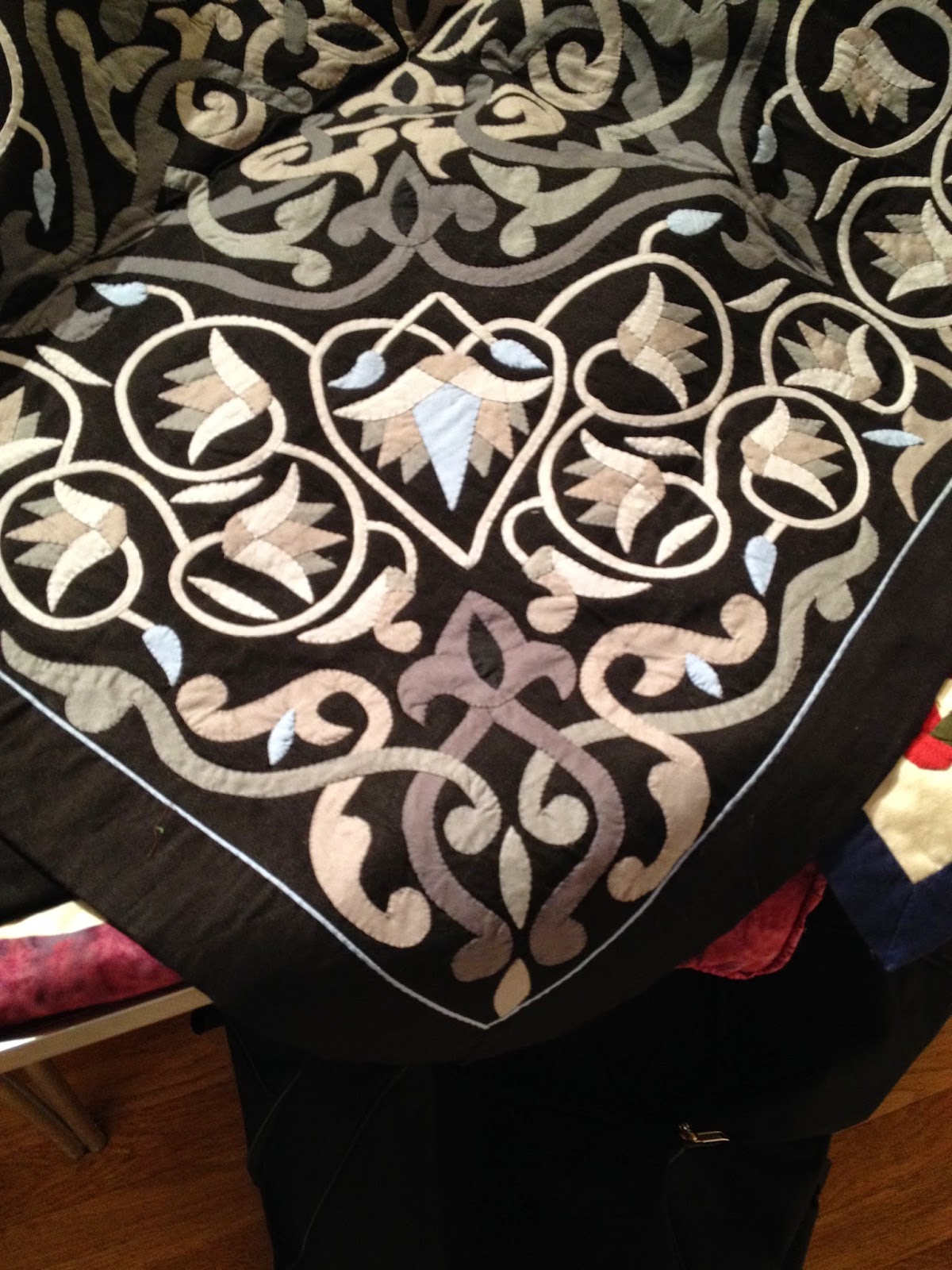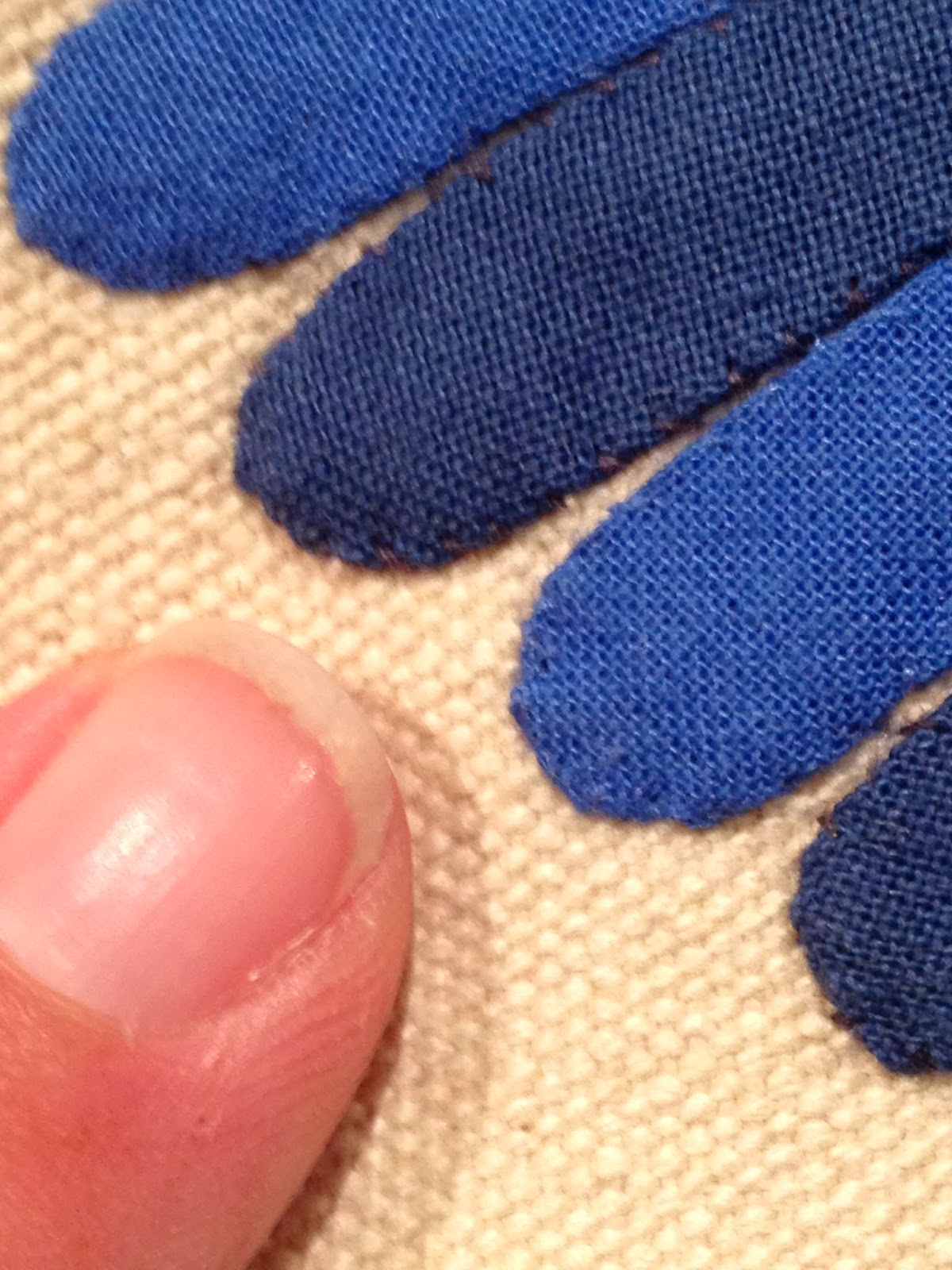Tone Trials
Chertsey, and Christmas
Most are being finished at home - I'm really looking forward to seeing the finished items next month
Meanwhile I've finished sewing together the blocks of a Christmas quilt.
Inspired by these fab blocks that Nicky (Mrs Sew and Sow) has been posting, (great colour combos) and this Christmas quilt from Carla at Grace and Favour, (and half price FQs from hobby craft) I have made this flimsy :-)
It needs basting and quilting, but it *might* be ready by Christmas!
Waiting for the Weekend
Work, life, family and "stuff" seems to be claiming a disproportionate amount of my time at the moment, and sewing time seems to be very occasional.
Some days I don't even make it to the sewing room, but I try and tack a few more Hexies, or sew another flower together most evenings as I spend a bit of time with husband (usually watching TV, but at least I'm there!!!)
So my collection of rainbow hexi flowers are growing- 57 completed flowers, and the makings of probably the same again
I've also been doing some work on the Aqua Christmas quilt. It's now been basted and quilted
I know what I want to do for the binding - but not how to do it!
I want prairie points,
and I need them to be held in place with the binding
And I want them sticking out
But I have no idea how to turn the corners - it doesn't work doing the normal binding corner method. Suggestions welcome!
Rewind, then Recycle
I don't know if you saw this article in May's copy of the Quilter (let's rewind)
I confess I didn't, but one of the ladies at Richmond and Kew quilters did, and shared it with the rest of us. The summary is that a lady called Lorraine is able to get shirt offcuts from a factory that makes prestigious shirts (including for Prince Charles)
The charge is minimal (from £3 a metre) and all proceeds go to charity - that has to be a win win arrangement! (edit: you can text Lorraine on 07977 588 583)
So, in order to help the charity, and keep fabric out of landfill (selfless person that I am) I bought a bag and a bundle (plus p&p it came to £10.50), and Lorraine very kindly sorted blues and creams for me.
I'd cut into the smaller pieces before I thought to take any photos, but this box was pretty much filled with fabric, and here are the larger pieces waiting to be cut, together with the smaller pieces cut into 10x2.5" strips.
I've been collecting men's shirts to recycle for bunting classes too, but dont have another session planned, so I've gone through those shirts finding blues and creams, and cutting 10" strips: I think I have quite a few now
Inspired by this,
 I'm finally making a quilt for my cousin in Norway
I'm finally making a quilt for my cousin in NorwayTale of the Tentmakers
The 'tents' are made like a patchwork quilt (three layers) but are traditionally used more like a curtain - they were originally huge, but were too big and heavy for tourists to buy and take home, so they now make smaller versions suitable for wall hangings.
This technique has been in existence for probably 5000 years, but (quote from Wiki) "Despite their historic legacy, the 'tentmaker' occupation is now endangered. This is largely due to competition from imported mass-printed fabrics bearing similar decorative patterns."
The senior tentmaker in each family group will have drawn a design on a wedge of papers, a young lad will have pricked the design onto canvas, rotating the wedge until he has transferred the design onto the whole canvas, and it is then clarified using a pencil. The men sit cross legged with a pair of shears nearby, and roughly cut a suitably sized piece of fabric, and fold it while they stitch it so it the the required size. You may be thinking of needle turn applique - but at the speed of light with no evidence of precision cutting at all
I saw the tent makers at work at the Festival of Quilts a few years ago, and could have stood for hours watching them. Each piece will have been worked by one person, they start their training as a gofor at the age of about 8, and have stopped by the age of 40 or so
Barbara brought along dozens and dozens of these for us to look at (and touch and photograph) and talked us through her discovery of and learning about these works of art, and the families who make them
In the end the table looked like a souk market place!
The colours and the designs are specific to each family, and by the end of the talk even we could recognise which items had been stitched by the same family: this pink version and the following blue version being a prime example
In some cases the stitches were visible (an apprentice's work)
But in others, they were not (a master's work)
For the tourist market some are now pictures rather than patterns
And others show the influence of patchwork : Dresden plates meets Cairo Tentmaker
If you ever go to Cairo, could you just pop along to the Street of the Tentmakers and get one for me! One like this would be grand; this one was my absolute favourite




























No comments:
Post a Comment
Thanks for commenting: I don't always get notified that you left a post, so apologies if I don't respond